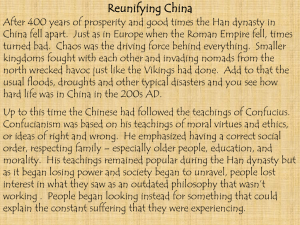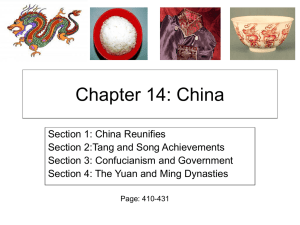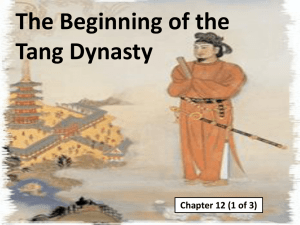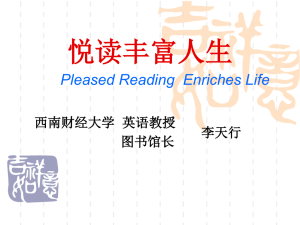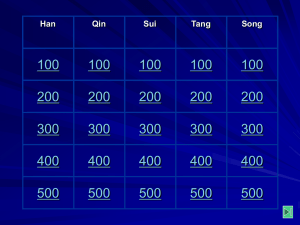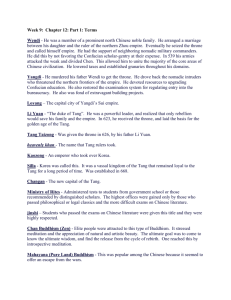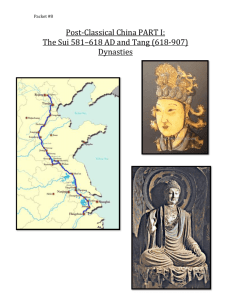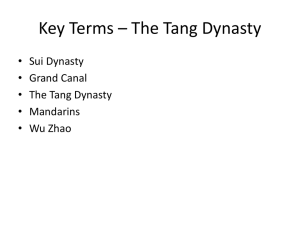Ch 12 (256-261)
advertisement
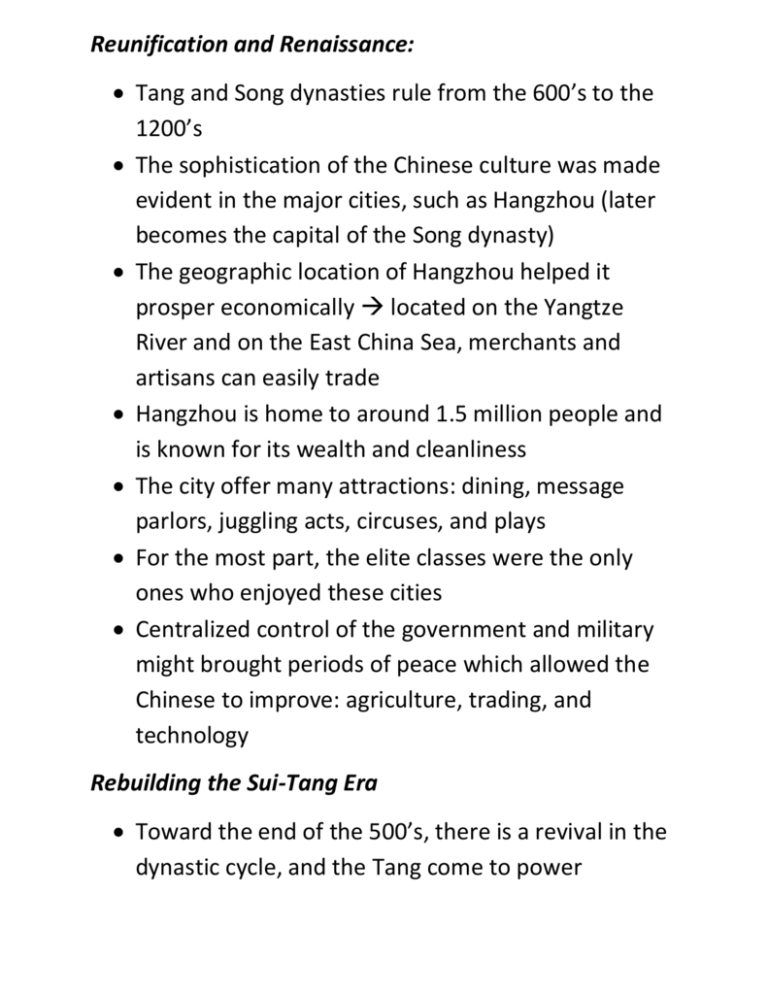
Reunification and Renaissance: Tang and Song dynasties rule from the 600’s to the 1200’s The sophistication of the Chinese culture was made evident in the major cities, such as Hangzhou (later becomes the capital of the Song dynasty) The geographic location of Hangzhou helped it prosper economically located on the Yangtze River and on the East China Sea, merchants and artisans can easily trade Hangzhou is home to around 1.5 million people and is known for its wealth and cleanliness The city offer many attractions: dining, message parlors, juggling acts, circuses, and plays For the most part, the elite classes were the only ones who enjoyed these cities Centralized control of the government and military might brought periods of peace which allowed the Chinese to improve: agriculture, trading, and technology Rebuilding the Sui-Tang Era Toward the end of the 500’s, there is a revival in the dynastic cycle, and the Tang come to power Initially, it was assumed the Tang dynasty would be another “splinter state” Wendi (wealthy nobleman) marries off his daughter to a provincial in the north Wendi eventually assumed much of the power that the northern Zhou ruler had and claims himself “emperor” He gains support, and in 589 the Sui armies over ran a divided Chen kingdom in the south first time that “core areas” of China had been united in 350 years Wendi gains widespread support through lowering taxes and establishing granaries Collapse of the Sui Dynasty After Wendi dies, his son (Yangdi) takes over the dynasty Yangdi murders his father to get to the throne He continues his father’s conquests and continues pushing back the northern Mongols Yangdi brings legal and education reform: 1. Brings back civil service examinations 2. Upgrades Confucian education Yangdi is over-extravagant in his taste he conscripts hundreds of thousands of peasants to build palaces, a new capital city at Loyang, and various canals His demands exhaust the peasant class, but he continued to lead his angry and exhausted subjects into a war thats aim was to bring back Korea under Chinese control Military failures for Korea and defensive battles caused violent revolts all throughout the empire Provincial governors regain control over their regions on the north China plan this led to a crumbling Sui dynasty Yangdi is assassinated by his own administration in 618 Emergence of the Tang and Restoration of the Empire: Li Yuan, once a supporter of Yangdi, restored the empire after 618 After Yangdi grew irrational as a leader, Li Yuan was convinced by his advisors and family that rebellion was the only way to save the empire and his own family Alongside Li Yuan’s 2nd son, the two build the foundations of the Tang dynasty Tang armies expand as far west as Afghanistan Tang people completed the construction of the Great Wall of China In 668, under the Tang emperor Kaozong, Chinese military forces take back Korea the Chinese rename it “Silla” and design it as a “vassal state” Rebuilding the Bureacracy: In order for the Tang dynasty to restore Chinese unity, they realize they need to rebuild the bureaucracy The Tang emphasize the importance of the scholar-gentry and Confucian theology As the emphasis on a scholar-gentry increases, those who previously held the authority began losing it (aristocrats) The Tang bureaucracy reaches all the way from the Imperial level to the “town” level



